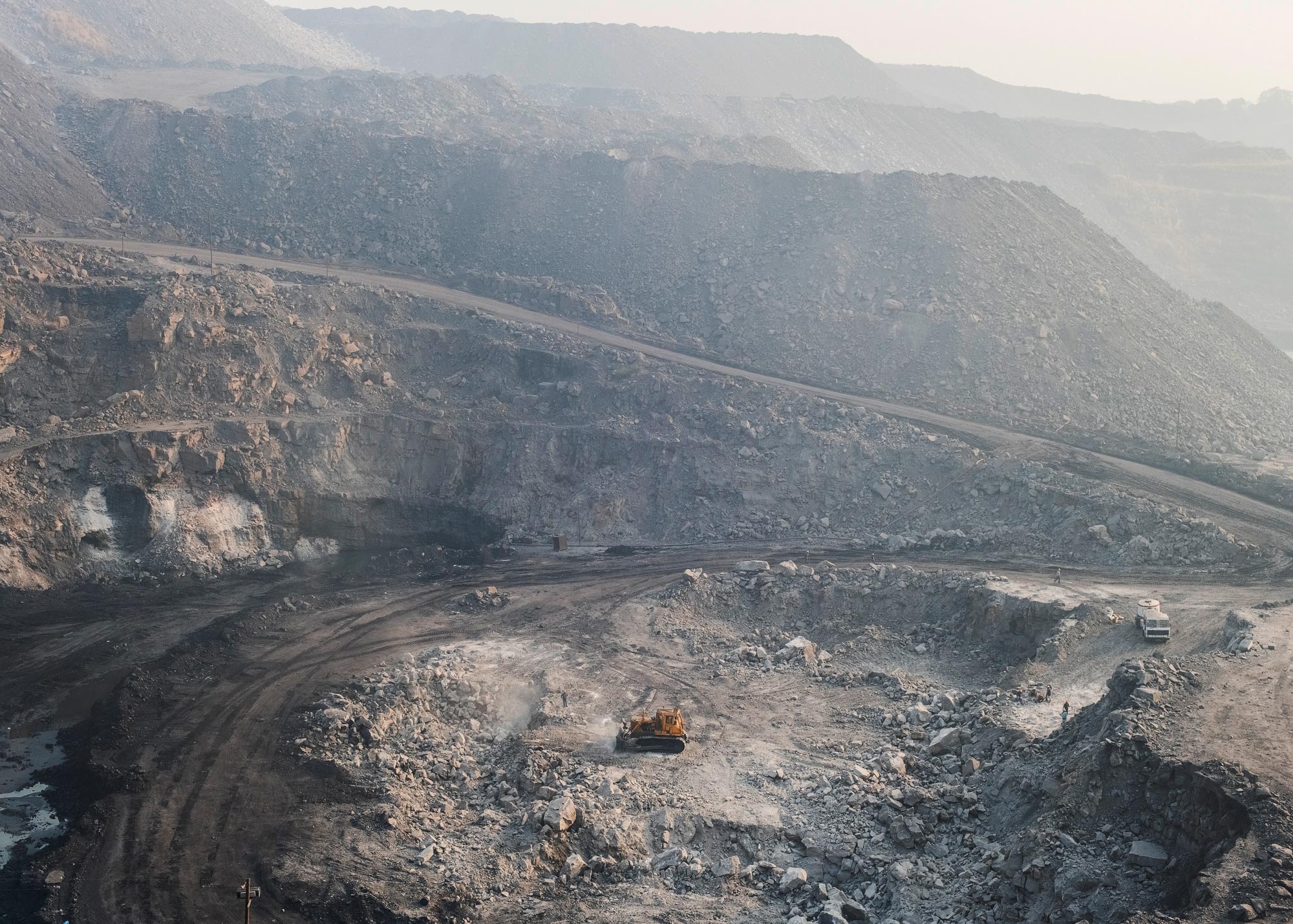
The drive from Ranchi to Hazaribagh in the eastern Indian state of Jharkhand is only 65 miles, but it takes nearly three hours. We swerve to avoid schoolchildren chatting with friends and meandering down the highway, honk at cows to get out of the way, and accelerate past pickups reconfigured as makeshift transport vehicles overflowing with workers. Men in sandals push bicycles overloaded with bags of coal down the highway, while on the back roads close to Hazaribagh, women carry buckets of the stuff on their heads.
Coal is what brought me to Jharkhand, one of India’s poorest and most polluted states. The pedestrian colliers, illegal miners trying to make ends meet, are just the start. All along the route to our destination, the Topa Open Coal Mine, a caravan of large, colorful trucks filled to the brim with coal barrel toward us in the opposite lane. When we finally reach the mine, I see the source of it all: an explosion has blasted through a wall of rock, opening access to new tranches of coal to feed the country’s fast-growing power and industrial needs. says JK John, the senior mining supervisor on site employed by a subsidiary of the state-owned Coal India Ltd.: “Here, coal is in demand.”
Two flights and more than 900 miles away, the northwestern state of Rajasthan is a world apart. Along a smoothly paved highway from the Jaisalmer airport, wind turbines dot the landscape as far as the eye can see. Farther from the town’s center, we approach a field of solar panels, comprising a 300-MW power plant opened in 2021 by the Indian company ReNew Power, providing electricity for the growing population of the state of Maharashtra, home to Mumbai. Even as the region expands its renewable-energy industry, the atmosphere remains clean and pleasant enough to support a thriving tourist trade.
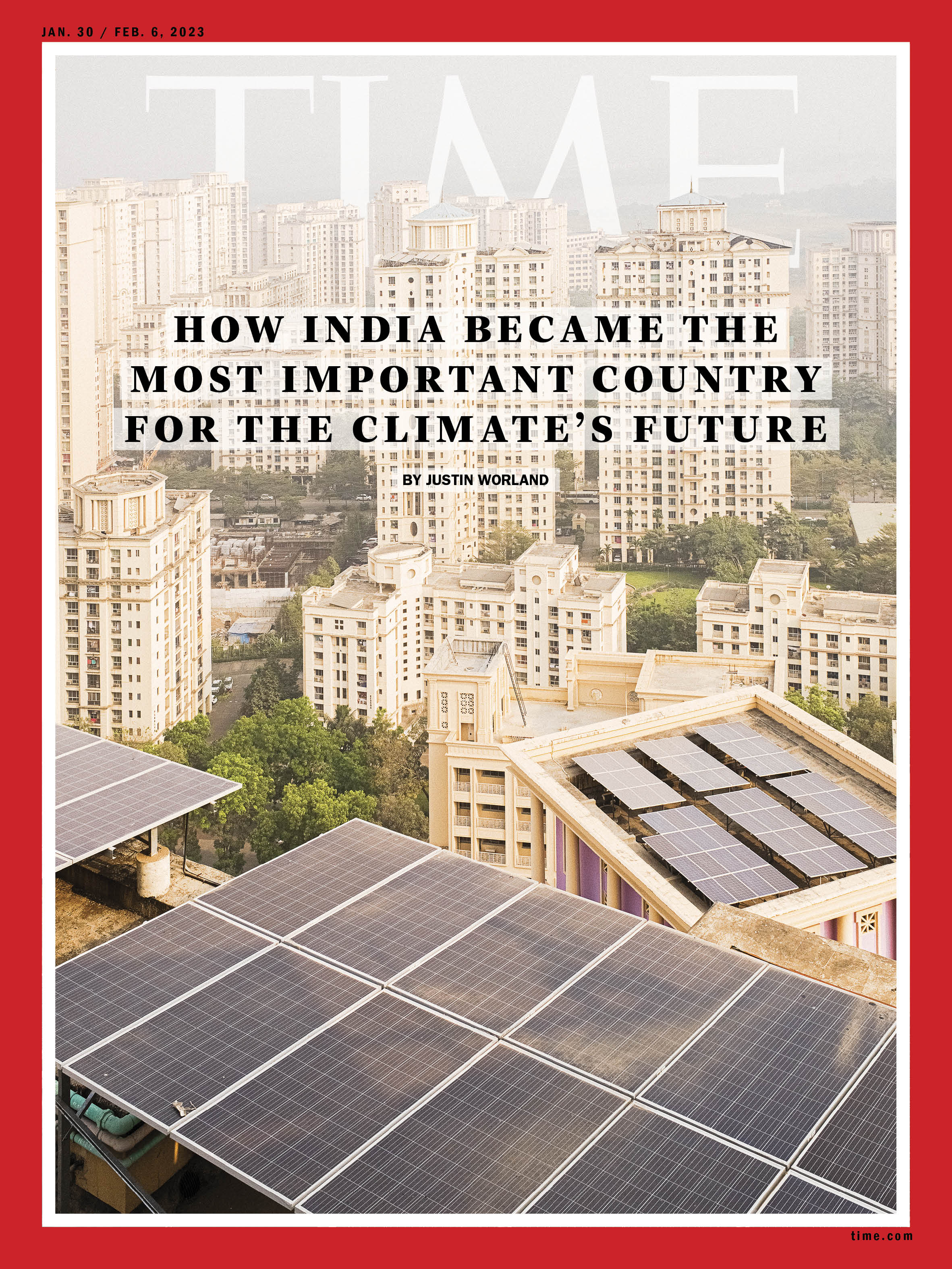
Get a print of the India cover here
Jharkhand and Rajasthan, so different in appearance, are being shaped by the same fundamental force: India is growing so rapidly that its energy demand is effectively insatiable. But the two states present starkly different answers to that demand. Historically, fossil fuels from places like Jharkhand powered industrialization. But today, with climate concerns rising, many experts are calling for India to ditch coal as soon as possible and embrace the green-energy model so prevalent in Rajasthan.
Much rides on which approach dominates India’s energy future. In the three decades since reducing emissions became a discussion point on the global stage, analysts have portrayed the U.S., China, and Europe as the most critical targets for cutting pollution. But as the curve finally begins to bend in those places, it’s become clear that India will soon be the most important country in the climate change effort.
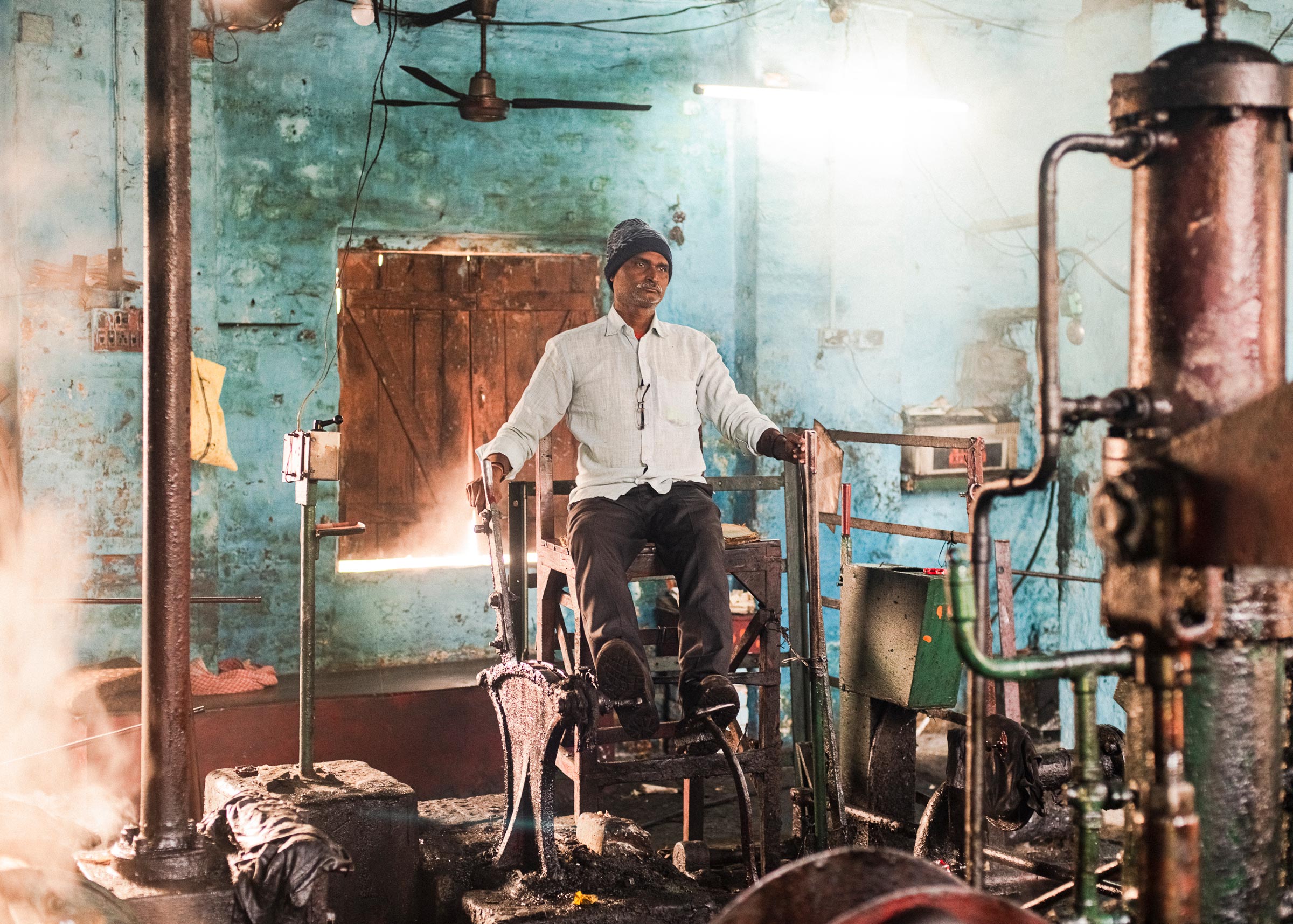
In December, I spent 10 days in India, visiting coal communities, touring renewable-energy sites, and talking with leaders in the country’s political and financial hubs to understand India’s approach to the energy transition. The picture that emerged is of a government following an approach uncharted for a country of its scale: pursue green technologies in the midst of industrialization while leaving the fate of coal to the market. “India, as a responsible global citizen, is willing to make the bet that it can satisfy the aspiration for higher living standards, while pursuing a quite different energy strategy from any large country before,” says Suman Bery, who leads NITI Aayog, the Indian government’s economic policy-making agency. India, Bery says, will pursue clean energy while seeking a “balance between energy access and affordability, energy security, and environmental considerations.”
Where that balance is struck could tip the climate scales worldwide. India contributes 7% of the emissions that cause global warming today, a percentage that will expand alongside its economy. This growth will help determine whether—and by how far—the world blows past the goal of keeping global temperatures from rising more than the Paris Agreement target of 1.5°C. Equally important, India’s approach is being watched elsewhere. If it can use low-carbon development to bring prosperity to its 1.4 billion people, others will follow. Failure could lead to a retrenchment into fossil fuels across the Global South.
What the Global North does matters too. The International Energy Agency (IEA) estimates India needs $1.4 trillion in additional investment in coming decades to align its energy system with global climate targets; that will very likely require reforms at international lenders like the International Monetary Fund (IMF) and the World Bank to facilitate the flow of money. The best outcome, observers say, is one where India gets the help it needs to make the best choice for everyone. “India has to do it for itself,” says Rachel Kyte, the dean of the Fletcher School of international affairs at Tufts University. “And India needs to do it for the world.”
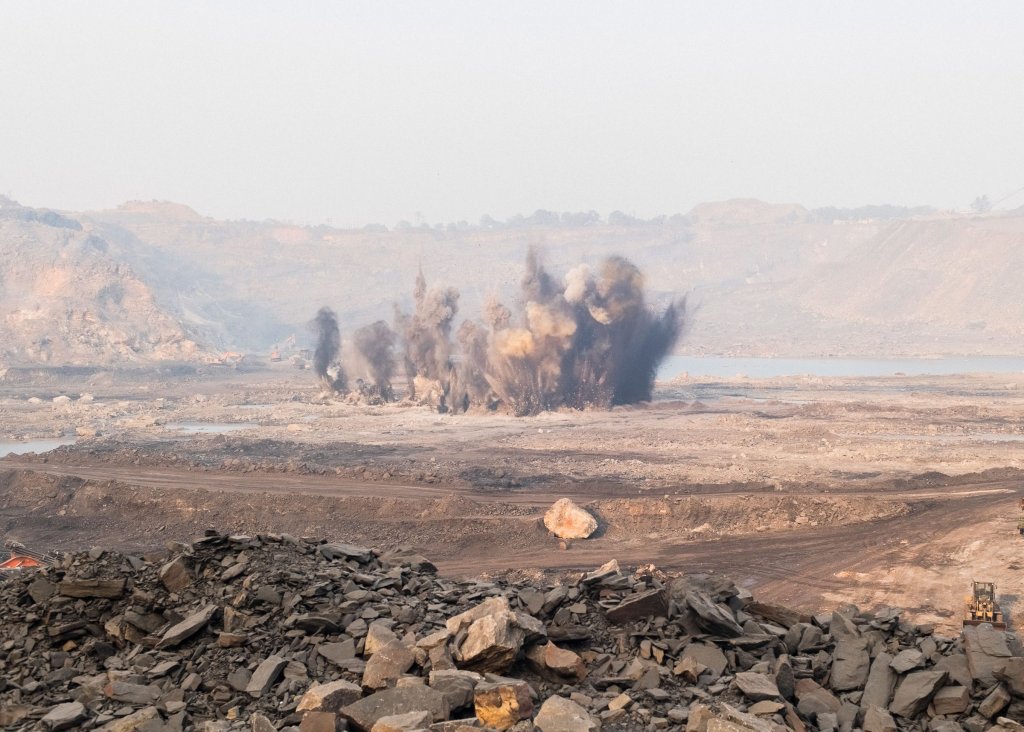

In a bitter irony, coal-rich Jharkhand cannot provide reliable electricity even to hospitals, schools, and other essential service providers. India’s second poorest state may be an extreme example, but such problems pervade every corner of the country and are the crux of its energy and climate challenge. It is, fundamentally, a developing nation, and its leaders do not want to write off any fuel source while energy demand continues its meteoric rise. As the country’s population swells to as high as a projected 1.8 billion over the next 40 years, and its economy grows at an even faster rate, the country will need to add a power system equivalent in size to that of the entire European Union, according to the IEA.
Historically, development at that scale happened one way: fossil fuels built a country’s industrial base, and then leaders pivoted to a lower-carbon, service-oriented model. China, one of history’s most successful examples of rapid modernization, built its industrial capacity by relentlessly adding coal-fired power plants and now boasts the second largest economy in the world, run primarily on coal. With that base established, the country has recently begun its full-fledged expansion of renewable energy.
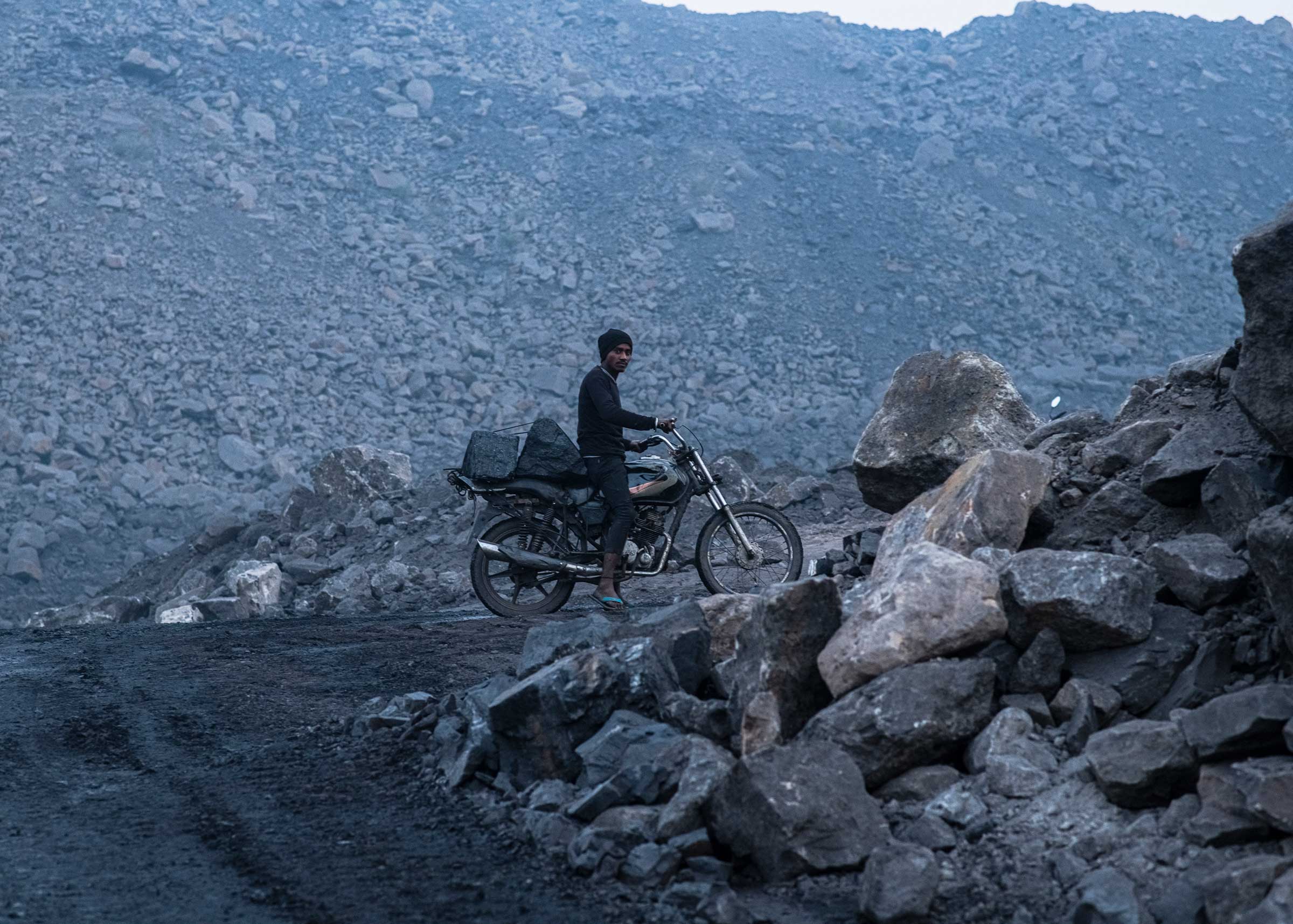
India, with its abundant coal resources, could simply do the same. While research shows that a rapid expansion of renewable energy could provide the country with reliable electricity given adequate investment, no other country has tried it at India’s scale. Attempting a renewable revolution comes with some inevitable risks, like technical challenges and vulnerability to foreign supply chains. Meanwhile, coal is tried and tested.
Above all, leaders in India insist that they have the right to power up using coal. In the lingo of the climate world, every country has its own population-based “fair share” of emissions it can produce before the world hits unsafe levels of global warming. In this formulation, the U.S. and European countries have already far exceeded their limits; India, on the other hand, has contributed only 4% of global emissions since 1850, despite being home to 18% of the world’s population, according to a 2019 U.N. report.
Whatever the reasoning, no one I spoke with in India, from academics to renewable-energy executives, would endorse a swift transition away from coal. “India’s not married to coal,” says Rahul Tongia, a senior fellow at the Centre for Social and Economic Progress in New Delhi. “It’s just that’s what India’s got.” Instead, government officials are working to promote renewable energy without actively working to shut down coal.
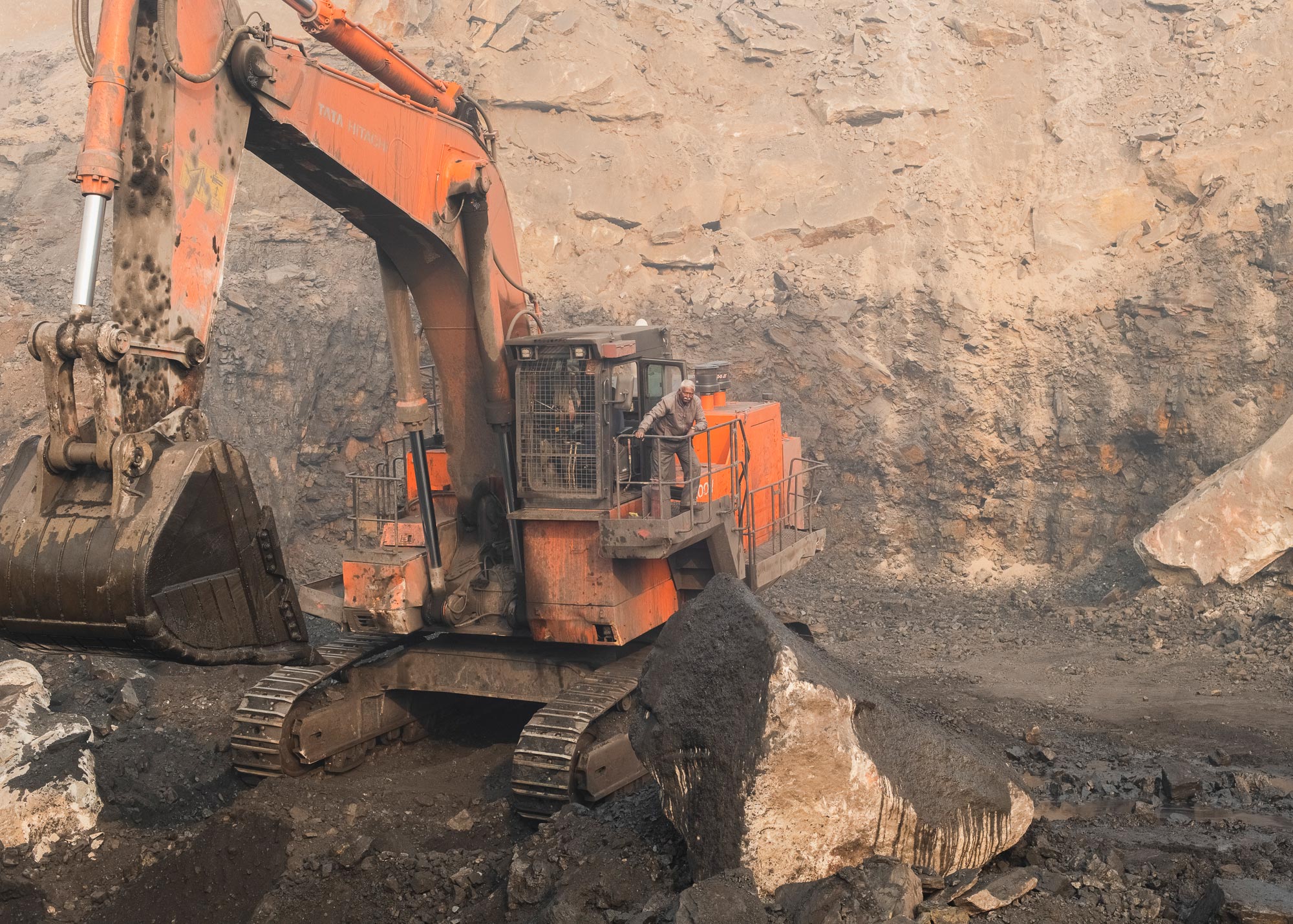
At the center of this approach sits Prime Minister Narendra Modi. Modi, whose support for solar power extends back to his time as the top official in the state of Gujarat in the 2010s, has set bold renewable-energy targets, saying at COP26 in 2021 that the country would install 500 gigawatts of renewable-energy capacity by 2030. That’s equivalent to 15 times California’s current renewable capability.
To get there, the Modi government has merged its renewable-energy and clean-technology objectives with its policy of liberalizing the economy and boosting the private sector. Bery, of NITI Aayog, describes the government’s approach as market-based: creating a context for clean technologies to “edge out coal in the market” rather than relying on government mandates. India, he tells me in his New Delhi office, should be “backing all these other technologies, so that it’s a pure commercial choice, rather than a regulatory choice to phase out coal.”
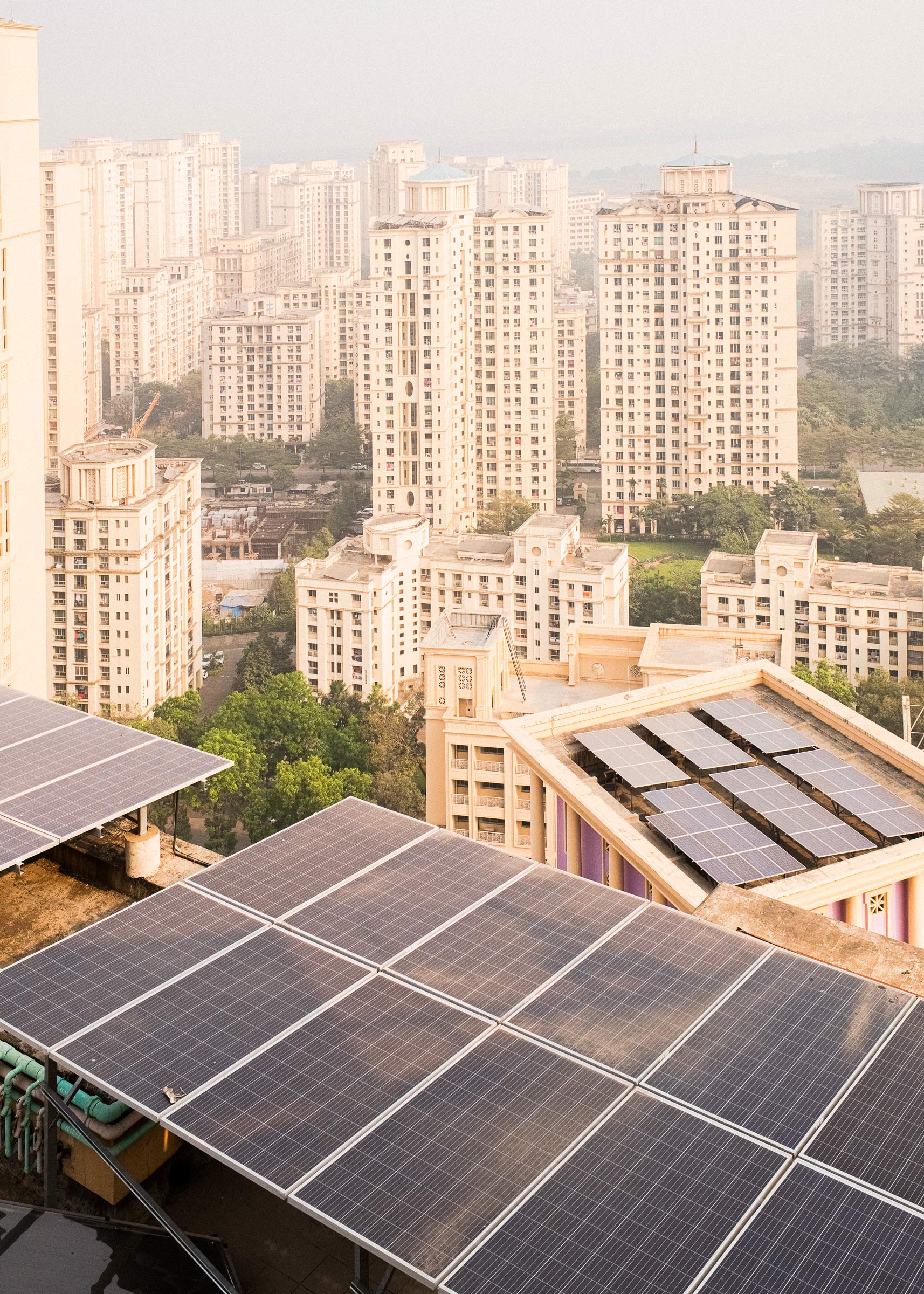
Industry insiders say this approach is working. The government-backed Solar Energy Corp. of India, for example, all but eliminated the risk that states would renege on their agreements—a significant worry for the banks that finance such projects—by serving as an intermediary between private-sector developers and states. If states don’t pay, the agency can essentially force them to do so—an innovation that has played a “fundamental” role in allowing the industry to grow, says Sumant Sinha, who has led ReNew Power since 2011.
Using policy to drive private-sector investment is the norm in places like the U.S., but it’s new for India. For decades, electricity production and distribution in India was controlled by state-owned enterprises, from state-owned coal mines to state-owned power plants to the state-owned grid. With the new approach, the private sector deploys clean-energy technologies, and the government facilitates.
This is a fundamental, ideological change in Indian governance. The preamble to India’s constitution declares it a “socialist” state. But the investment in renewable energy that has led capacity to double since Modi took office has come almost entirely from private companies—and it isn’t slowing down. “The most natural thing for India to meet this burgeoning electricity requirement is to meet it through renewable energy, because it’s the cheapest, most commercially sound thing to do,” says Sinha. The IEA projects that solar power will make up around 30% of India’s electricity generation by 2040, matching coal’s share. This private-sector vitality was on full display in Rajasthan, where I saw massive wind and solar farms that belong to the country’s biggest private players, including the mega-corporations Tata and Adani.
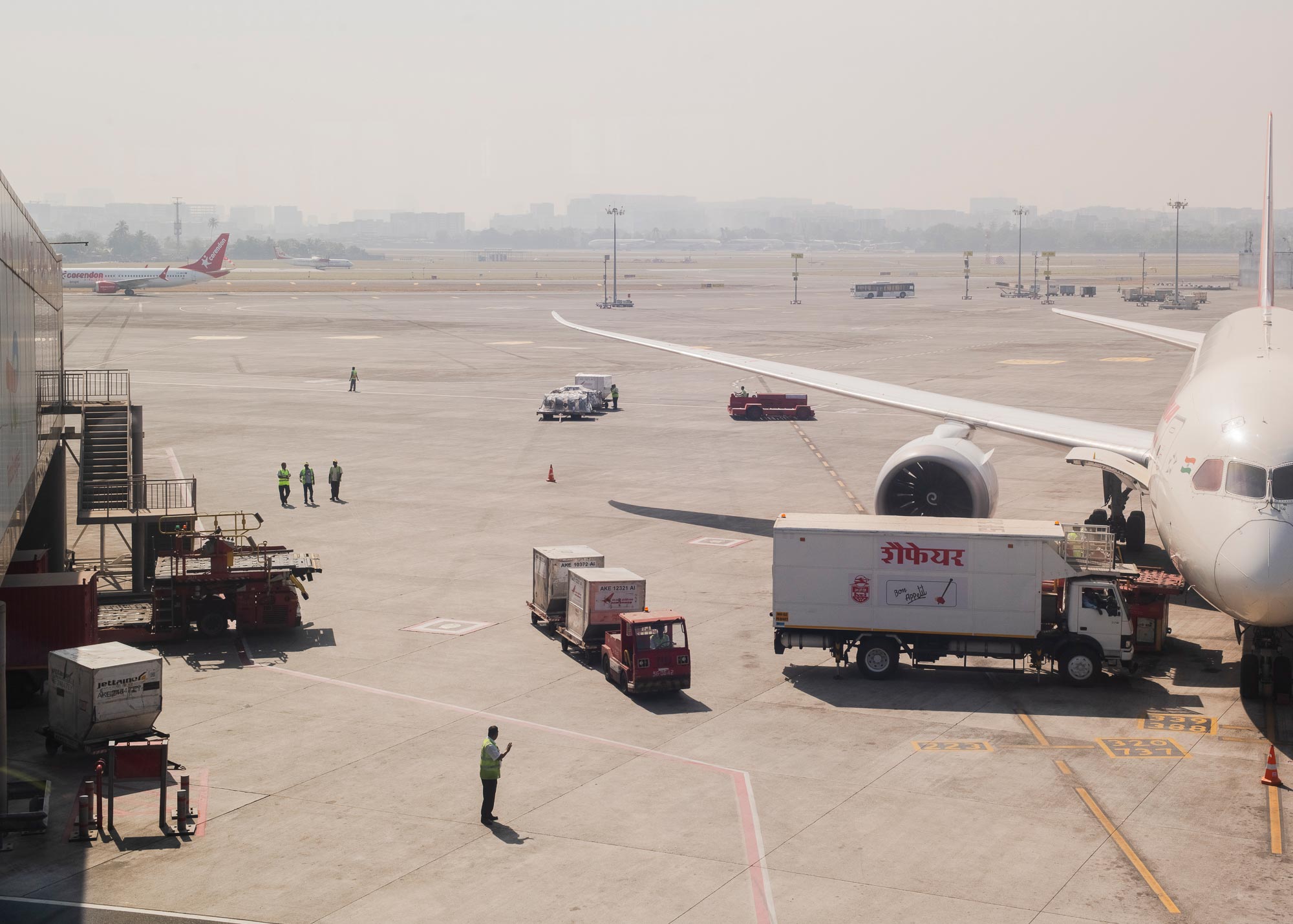
But the focus on markets also reflects hard politics. Driving around Jharkhand, a state of 33 million people, it’s impossible to miss how entrenched the coal industry has become. Livelihoods depend on it, from educated supervisors running the show to indigent locals scrounging for scraps of coal. On the outskirts of the Topa mine, I saw an entire village abandoned to make way for miners to open a new coal seam.
Displacing such a colossus, policymakers say, cannot be done with a regulation here and there. “The minute you say ‘no coal’ there will be political implications. There will be riots,” says Amitabh Kant, who is leading India’s G-20 conference this year. “But if coal becomes commercially nonviable, that will be acceptable because the market will do it.”
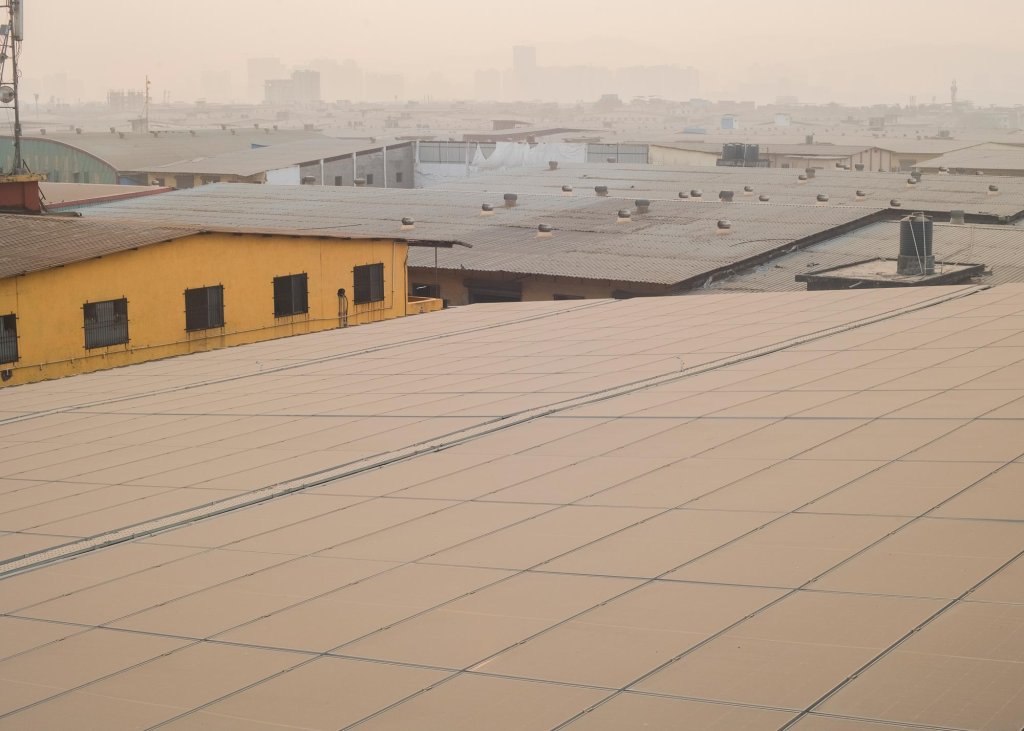

It’s a bold bet. Even with a true transition from coal likely decades away, many local officials and activists across India have begun to call for dedicated programs to ensure a “just transition” that protects those affected by a move away from coal.
A smooth transition matters not only for India but also for the rest of the world—it is a test case for how to implement an energy shift in developing countries while supporting their economic growth.
India’s leaders are keenly aware of the global stakes. Wherever I traveled there, I saw signs celebrating India hosting this year’s G-20, the annual forum for the world’s largest economies, at which the host is keen to make climate a central topic. India will tout its efforts to spur behavioral change among consumers, and its nascent use of hydrogen as an energy-storage medium. The meetings, Kant says, could lead countries to come to agreement on how to reform institutions like the IMF and World Bank so they can help developing countries decarbonize. The energy transition globally will cost untold trillions of dollars, and most countries now agree that these international financial institutions need to create instruments to make investing in places like India less risky for private financiers.

To actually deliver on such an agenda, though, India must first convince the rest of the world that its model for low-carbon development can work. Modi and others have already begun a campaign to show the rest of the world how serious it is—and to point out Western hypocrisy. At COP27, the annual U.N. climate conference held in November in Egypt, India lobbied for countries to agree to phase out “all fossil fuels” rather than just coal, an implicit challenge to the U.S. and other Western countries that are rich in oil. “Why should only coal be phased out?” Kant asks me rhetorically. And Modi’s LiFE campaign, which focuses on the role behavioral change can play in cutting emissions, stems from a recognition that India’s per capita emissions are just 40% of the global average.
India’s energy future remains India’s “choice.” But for all of the country’s insistence on sovereignty, by marrying its energy policy to its economic liberalization it has chosen a path of interdependence. In leaving the speed of its green transition to the whims of the market, India has accepted a dependence on price signals, investment choices, and economic trends far beyond the control of New Delhi or Mumbai. “The political signals, the policy evolution, or even the international commitments are also contingent on how quickly the market participants are able to respond,” says Arunabha Ghosh, CEO of the Council on Energy, Environment and Water, an Indian environmental NGO.
Which means our future on the planet, once again, depends on a collective choice. Political leaders across the Global North and South can reform the institutions that govern the global economy, ensuring that the market decisively favors clean energy over fossil fuels. Or, we can all bid farewell to global climate targets and gird ourselves for the far more costly dangers that come next. —With reporting by Solcyre Burga and Leslie Dickstein/New York
More Must-Reads from TIME
- Why Biden Dropped Out
- Ukraine’s Plan to Survive Trump
- The Rise of a New Kind of Parenting Guru
- The Chaos and Commotion of the RNC in Photos
- Why We All Have a Stake in Twisters’ Success
- 8 Eating Habits That Actually Improve Your Sleep
- Welcome to the Noah Lyles Olympics
- Get Our Paris Olympics Newsletter in Your Inbox
Write to Justin Worland/Jharkhand, India at justin.worland@time.com